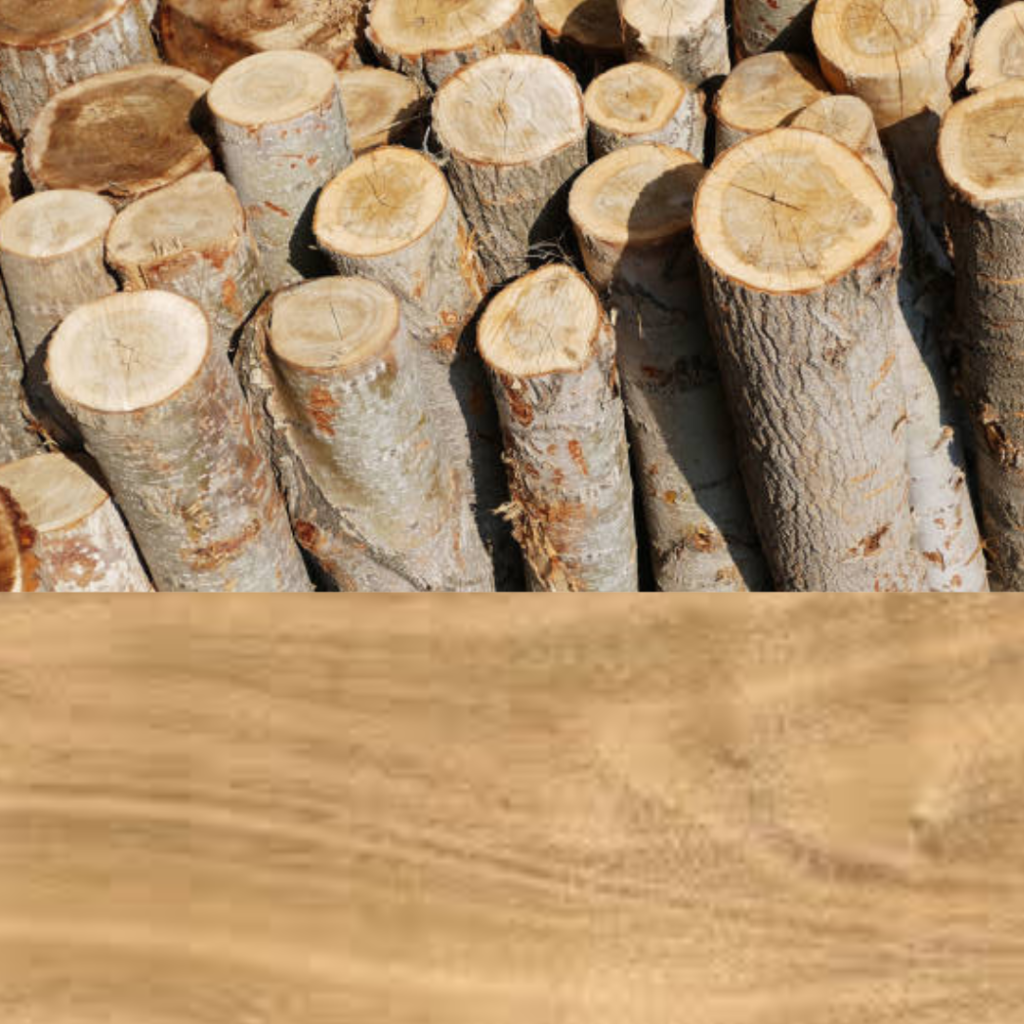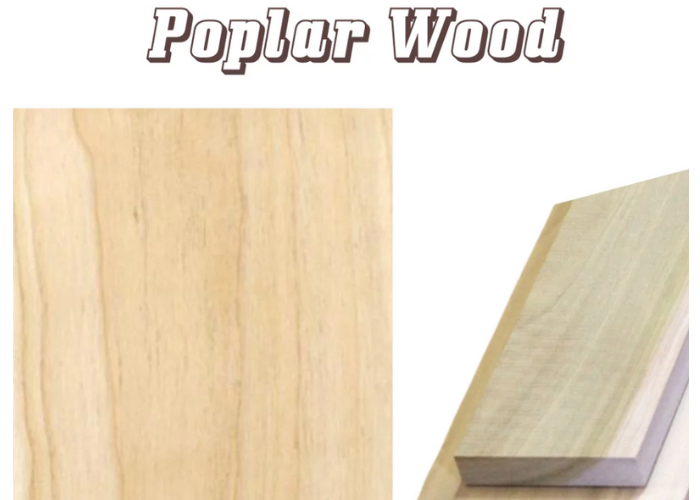Poplar Wood
Introduction
Because of its workability, affordability, and simplicity, poplar wood is a common option among furniture designers and builders. Still, this wood offers more than just availability and cost. We shall examine in-depth what makes poplar wood such a fascinating material in this post, looking at its properties, uses, advantages, and drawbacks.
What is Poplar Wood?
This wood is fast-growing and widely found in North America, Europe, and some areas of Asia, poplar wood is Though categorized as a hardwood, poplar wood is frequently softer than other hardwoods, which facilitates working with it.
Poplar Tree Origins
Poplar trees, of the genus Populus, have their roots in major Oligocene era evolutionary events at 27.24 million years ago. Modern poplar species diversified mostly in the early Miocene, around 17.56 million years ago.
Early divergences of the Salicaceae family, to which poplars belong, most likely started in Eurasia following the Cretaceous-Paleogene mass extinction and then spread to other areas, including North America, helped by the Bering Land Bridges during the Cenozoic era.
Also read: Balsa Wood: Unveiling Its Remarkable Strength
Characteristics of Poplar Wood
Physical characteristics
Color and Grain: Typically with a light brown to creamy yellow heartwood, poplar wood features sapwood that is only slightly paler. Mineral staining might also cause color changes in the wood, resulting in tones of red, purple, and green.
Weight: With a Janka hardness grade of roughly 460 to 540 lbf, suggesting that it is softer than many other hardwoods, weight is considered light.
Texture: The grain’s usually straight and homogeneous nature helps to explain its machining and finishing simplicity.
Workability
Ease of Use : Poplar is handy for both hand tools and equipment since it is easy to cut, shape, and glue. To prevent fuzzy surfaces, nonetheless, it may require sharp cutters during planing.
Finishing: Although poplar can be stained, results may vary because of its uneven absorption; yet, paint absorbs quite well, hence it is a great choice for painted projects.
Durability and Stability
Non-Durable: It is categorized as non-durable and should not be used in heavy-duty applications like flooring since it can be easily scratched and dentered.
Dimensional Stability: While dried properly it shows good stability; yet, improper management during the drying process might cause warping.
Regular Applications:
Furniture and Cabinetry: Often used for internal furniture components including drawers and frames due to its lightweight nature and economy, furniture and cabinets.
Mouldings and Trim: Its stability and paint-ability make it perfect for house trim work.
Utility Items: Commonly found in pallets, containers, and other utility uses because of their low cost is utility items.
Plywood Production: Widely employed in the fabrication of plywood for many building and decorative uses.
Environmental Impact
Fast growing and usually grown sustainably are poplar trees. They are said to help with carbon capture, therefore supporting environmental efforts against climate change.

Advantages of Poplar Wood
Affordability: Poplar is somewhat reasonably priced and readily available when compared to several hardwoods. For projects on a tight budget, this cost-effectiveness benefits.
Quick Drying: Poplar wood dries faster than many other species, hence it can be seasoned and ready for use in a less time span.
Low Smoke Production: When used as firewood, poplar ignites quickly, produces minimal smoke, and generates a pleasant aroma, making it an excellent choice for indoor fireplaces.
Sustainability: This wood is thought to be an environmentally beneficial fast-growing tree species. Its farming lessens dependency on slower-growing hardwoods and encourages sustainable building methods.
Disadvantages of Poplar Wood:
Softness and Durability: Though it is categorized as a hardwood, poplar is somewhat soft and easily dented and scratched. This less fits for heavy-duty uses like flooring or outdoor furniture.
Inconsistent Staining: Because of its varied absorption rates, poplar wood can be difficult to color uniformly. Although it looks good, consistent stain finish could call for more work.
Maintenance Needs: It requires frequent maintenance to avoid rot or insect damage, particularly if used outside or in humid surroundings.
Limited Outdoor Use: Poplar’s weather sensitivity makes it inappropriate for outdoor uses without appropriate treatment or finishing.
Comparison of Poplar Wood with Other Hardwoods
| Property | Poplar | Alder | Pine |
| Workability | Easy to be handled, soft, lightweight, smooth finishes, poplar needs careful handling to prevent splintering. | Excellent workability, dimensionally stable, closed grain for polished finishes | Manageable for most woodworking jobs; denser than poplar; easy to work with. |
| Durability | Not fit for high-impact or outdoor use without treatment; non-durable, prone to dents and scratches. | More durable than poplar, alder preserves integrity over time and is appropriate for furniture that calls for lifetime. | Though softer than many hardwoods like oak or maple, more durable than poplar and better suited to resist wear and tear. |
| Aesthetic Appeal | Light tint ranging from creamy white to pale yellow with greenish streaks, Inconsistent staining; | Uniform grain pattern of warm tones ranging from light tan to reddish-brown; pleasing in appearance for furniture. | Yellowish to reddish-brown color; knots and grain patterns offer character; may not fit exact aesthetic requirements. |
| Cost | Reasonably priced for big projects. | Though slightly more costly than poplar, alder has better stability and visual appeal. | Popular for cost-conscious projects, pine is often less expensive than poplar and alder. |
| Janka Hardness Rating | Approximately 540 lbf (low hardness). | Although density makes them to seem to be harder than poplar, their hardness is similar. | Harder than poplar, pine varies by species from 380 lbf ( Eastern White Pine) to 870 lbf (Longleaf Pine). |
Also read: Douglas Fir vs Yellow Pine: Finding the Perfect one
Cedar Wood: Features and Benefits Revealed
Staining Poplar Wood
Because poplar wood absorbs pigments unevenly, staining it can be difficult and usually produces blotchy results. Here are some main ideas and guidelines for dyeing poplar wood effectively:
Preparation:
Sanding: Start by sanding the surface to get flaws free and produce a smooth finish. For best results, start with coarse sandpaper then work toward finer grits.
Conditioning: Highly advised is using a wood conditioner prior to staining. This helps to guarantee a more consistent absorption of the dye, so lowering the blotchiness risk.
Choosing Stain:
Though Poplar may handle several stains, darker stains usually show better results than lighter ones. Lighter poplar absorbs stain unevenly, hence darker tones are a safer option.
Application:
Apply the stain equally in the direction of the grain with a staining brush or rag. Work in parts; wipe off extra discoloration after letting it penetrate for a few minutes.
.Finishing:
Applying a protective clear coat—like polyurethane—will improve longevity and guard the stained surface from wear and tear once the stain cures.
FAQ:
1. Is poplar wood a hardwood ?
Poplar wood is categorised as a hardwood indeed. It is softer than several other hardwoods, including maple or oak, though. Though Poplar is classified as a hardwood, its light weight and smooth texture simplify working with it, much as some softwoods.
2. Is Poplar wood durable?
Poplar is a non-durable timber. Unless correctly treated, it is less suited for high-impact or outdoor uses since it is prone to dents, scratches, and wear.
3. Is Poplar wood good for outdoor use?
Poplar is not naturally immune to moisture, insects, or rot so it is not advised for outdoor use without appropriate treatment. Used outside, it calls for sealing or another protective finish.
4. Is Poplar a sustainable wood choice?
Commonly available and quite rapid growing, poplar trees are a more sustainable choice than slower-growing hardwoods.
5. How hard is Poplar wood?
With a Janka hardness value of about 540 lbf, Poplar wood is regarded as soft relative to other hardwoods.
6. Does Poplar wood warp easily?
Poplar is dimensionally stable—that is, it does not warp or twist as readily as other woods. Like any wood, though, it may deform depending on too much moisture or improper storage.
7. What is the color of Poplar wood?
Usually pale yellow or creamy white, poplar wood includes occasional greenish or brown streaks. The color might somewhat deepen over time.
Also read: Top 10 Woods Choices for Table Tops

